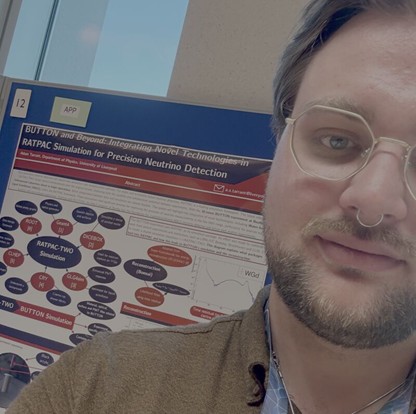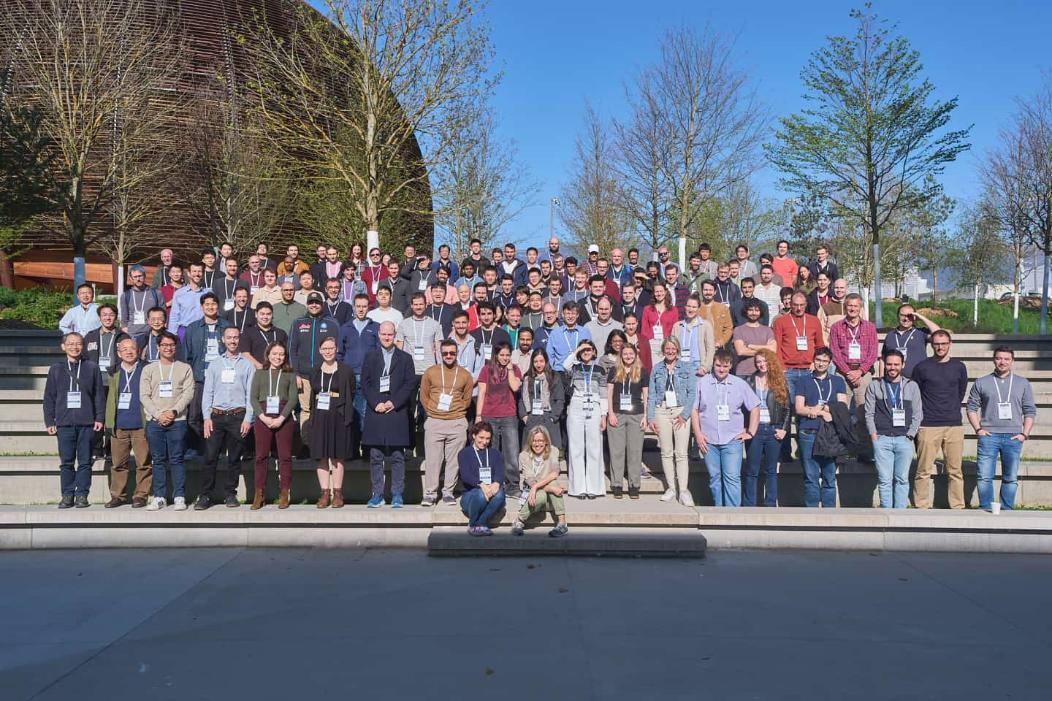LIV.INNO students attend spring conferences

The spring conference season has now passed and several of our LIV.INNO students have attended these conferences recently to present their work on a wide range of LIV.INNO topics.
The Institute of Physics’ Astroparticle Physics (APP), High Energy Physics (HEP) and Nuclear Physics conferences always attract several of our students and this year was no different.
This year the IoP Nuclear Physics conference was held at the University of Manchester and LIV.INNO students Tom Wonderley and Matthew Ockleton attended. This meeting featured invited talks from national and international speakers, as well as extensive opportunities for contributed talks. A poster session took place to showcase other contributions.
Matthew presented ‘Bayesian Analyses of Key Quark-Gluon Plasma Parameters Using JETSCAPE’. This poster focussed on constraining parameters associated with the Quark-Gluon Plasma (QGP); the state produced by strongly interacting matter at high energy densities in heavy-ion collisions.

Adam Tarrant presenting his poster at the IoP APP and HEP conference.
The IoP joint APP and HEP conference was held at the University of Cambridge. Former LIV.DAT student Adam Tarrant who is now continuing his research as a post-doc at the University of Liverpool presented ‘BUTTON and Beyond: Integrating Novel Technologies in RAT- PAC for Precision Neutrino Detection’ which is a continuation of the research he undertook for his PhD.
Current LIV.INNO student Katie Ferraby presented ‘Measurement of the muon electric dipole moment at the Fermi- lab g-2 experiment’. This was a summary of the analysis of the measurement of the electric dipole moment of the muon at the fermilab g-2experiment, which was done using 25% of the total dataset. The sensitivity of the future measurement, using the full statistics, and an optimal weighting method, was shown.
Stephen Randles presented ‘Measurement of the Higgs to invisible branching fraction at the FCC-ee’. The FCC-ee is the proposed first phase of a next generation particle collider the Future Circular Collider with the first phase having electrons and positrons collided.

Delegates at the 5th ICFA Beam Dynamics Mini-Workshop on Machine Learning for Particle Accelerators (credit: ICFA)
The 5th ICFA Beam Dynamics Mini-Workshop on Machine Learning for Particle Accelerators was held at CERN with LIV.INNO students Qiyuan Xu and Alex Jury in attendance. The goal of this workshop was to bring together the world-wide community of researchers applying machine learning techniques to particle accelerators.
Qiyuan presented ‘Developing Radiation-Tolerant Transverse Beam Imaging Using Synthetic Data and Multimode Fiber’ and Alex presented ‘Simulation package for the Beam Synchrotron Radiation Longitudinal density monitor (BSRL)’. As previously reported, Qiyuan won the best poster prize at this workshop.